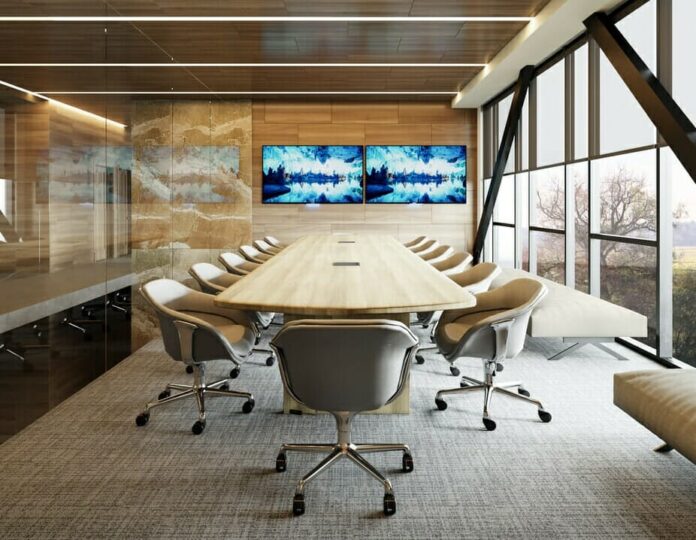Introduction
Corporate office interiors play a crucial role in shaping the culture, productivity, and overall success of a company. Gone are the days of cookie-cutter office spaces where one-size-fits-all design was the norm. Today, businesses recognize the importance of creating customized office environments that align with their specific needs, values, and objectives. In this article, we will delve into the significance of tailoring corporate office interiors to specific needs and explore how this approach can foster a more productive, engaging, and innovative workplace.
- Understanding the Importance of Office Interiors
Before delving into the concept of customized office interiors, it’s essential to understand why office design matters. The office environment is not merely a backdrop for work but a dynamic element that influences employee behavior, well-being, and performance. Here are some key reasons why office interiors are vital:
1.1. Employee Well-Being and Satisfaction
A well-designed office can significantly impact employee well-being and job satisfaction. Features like natural light, ergonomic furniture, and comfortable breakout spaces can contribute to a more enjoyable work experience.
1.2. Productivity and Efficiency
The layout and design of an office can either enhance or hinder productivity. A well-thought-out space can encourage collaboration, minimize distractions, and streamline workflow processes.
1.3. Reflecting Company Culture
The office interior serves as a physical manifestation of a company’s culture and values. It communicates a sense of identity to both employees and visitors, reinforcing the organization’s mission and brand.
1.4. Attracting and Retaining Talent
A thoughtfully designed office can be a powerful tool for attracting and retaining top talent. Today’s employees value workplaces that offer a stimulating and inspiring environment.
- The Shift Towards Customization
Traditional office designs often followed a generic template, with cubicles, fluorescent lighting, and a standardized color palette. However, the business landscape has evolved, and so have office interiors. Companies now recognize that one size does not fit all when it comes to office design.
2.1. Flexibility and Adaptability
Customization allows businesses to create flexible and adaptable workspaces that can evolve with changing needs. This is particularly relevant in the era of remote and hybrid work arrangements, where offices need to accommodate a variety of work styles and preferences.
2.2. Employee-Centric Design
Customization enables organizations to design spaces that prioritize employee needs and preferences. This can include adjustable desks, ergonomic chairs, quiet zones for focused work, and communal areas for collaboration.
2.3. Brand Alignment
Every company has its unique identity and values. Customized office interiors provide an opportunity to align the physical workspace with the brand’s ethos, fostering a stronger sense of identity and purpose among employees.
2.4. Innovation and Creativity
Innovation often thrives in spaces that break the mold. Customized office interiors can incorporate creative elements and unconventional design choices that stimulate new ideas and fresh perspectives.
- The Process of Customization
Creating a customized office interior involves a well-planned and collaborative process. Here are the key steps involved:
3.1. Needs Assessment
The first step is to conduct a thorough needs assessment. This involves understanding the organization’s goals, the specific requirements of various teams or departments, and the preferences of employees. It’s crucial to gather input from stakeholders at all levels.
3.2. Space Planning and Layout
Once the needs are identified, the next step is to plan the office layout. This includes determining the allocation of space for different functions, such as individual workstations, meeting rooms, lounges, and collaborative areas. The goal is to create an efficient and functional layout that supports the organization’s objectives.
3.3. Design and Aesthetics
The design phase involves choosing color schemes, furniture, lighting, and other aesthetic elements that align with the organization’s brand and culture. Designers often use mood boards and 3D renderings to visualize the final look of the space.
3.4. Ergonomics and Well-Being
Ensuring employee comfort and well-being is a critical aspect of customization. This includes selecting ergonomic furniture, providing options for standing desks, and incorporating elements that promote mental and physical health, such as plants and natural light.
3.5. Technology Integration
In today’s digital age, technology plays a significant role in the workplace. Customized office interiors should incorporate the necessary infrastructure for seamless connectivity, audiovisual equipment, and smart office solutions.
3.6. Sustainability and Environmental Considerations
Many organizations are placing a strong emphasis on sustainability and environmentally friendly practices. Customized office interiors can incorporate eco-friendly materials, energy-efficient lighting, and recycling stations to align with these values.
3.7. Budgeting and Project Management
Customization comes at a cost, and it’s essential to establish a budget early in the process. Effective project management is also crucial to ensure that the project stays on track in terms of both time and budget.
- Case Studies: Successful Customized Office Interiors
To illustrate the impact of customized office interiors, let’s look at two case studies of companies that have embraced this approach:
4.1. Google
Google is renowned for its innovative office spaces around the world. Google’s customized approach includes flexible workspaces, themed meeting rooms, and recreational areas to encourage relaxation and social interaction. The company’s commitment to customization reflects its emphasis on creating an inspiring and productive work environment.
4.2. Airbnb
Airbnb’s offices reflect the essence of the company’s brand and ethos. The office interiors draw inspiration from various Airbnb listings worldwide, showcasing diversity and cultural richness. Customized meeting spaces resemble actual Airbnb listings, complete with unique furnishings and decor. This approach not only aligns with Airbnb’s brand but also serves as a constant reminder of the company’s core mission of connecting people and cultures.
- Measuring the Impact
Customized office interiors can have a profound impact on an organization, but it’s essential to measure this impact quantitatively and qualitatively. Here are some metrics and methods for assessing the effects of customization:
5.1. Employee Satisfaction Surveys
Regular surveys can gauge employee satisfaction with the office environment. Questions related to comfort, productivity, and overall well-being can provide valuable insights.
5.2. Productivity Metrics
Comparing productivity metrics before and after office customization can reveal any improvements in workflow efficiency. This could include measures like project completion times and task throughput.
5.3. Employee Retention and Recruitment
Monitoring employee turnover rates and the ability to attract top talent can indicate the success of a customized office design in creating an appealing workplace.
5.4. Collaboration and Innovation
Qualitative assessments of collaboration and innovation levels can help determine if the customized office design is fostering creativity and teamwork.
5.5. Health and Well-Being
Tracking absenteeism and employee health indicators can shed light on whether the office design positively impacts physical and mental well-being.
Conclusion
Customized office interiors are no longer a luxury but a strategic necessity for modern businesses. By tailoring office spaces to specific needs, companies can create environments that promote well-being, enhance productivity, align with their brand, and inspire innovation. As we continue to adapt to evolving work trends, the role of customized office interiors in shaping the future of work cannot be overstated. Organizations that invest in this approach are likely to reap the rewards of a more engaged, motivated, and successful workforce.



